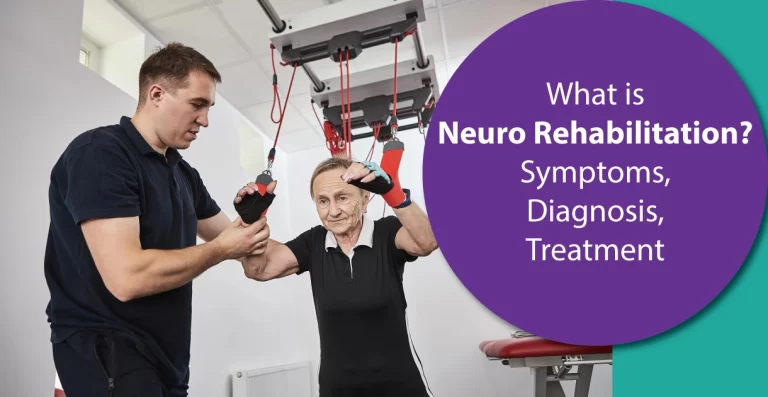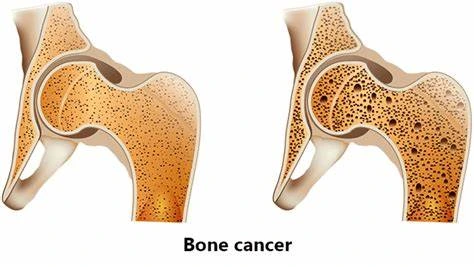Occupational Rehabilitation
What Is Occupational Rehabilitation?
Occupational rehabilitation has been represented as a multi-professional strategy provided to individuals of working age who experience health-related impairments, limitations, or restrictions that affect their work functioning. The primary aim of occupational rehabilitation is to optimize work participation. It is relevant for those with health conditions, injuries, illnesses, or disabilities that may impact their ability to participate in work, whether paid or unpaid. Occupational rehabilitation is not limited to specific industries or types of employment and also encompasses self-employment.
This definition acknowledges the role of rehabilitation practitioners who embody and apply the integrative biopsychosocial approach of the International Classification of Functioning, Disability, and Health (ICF) by the World Health Organization. It recognizes the various factors that can contribute to work disability at both individual and societal levels.
Vocational rehabilitation involves a range of interventions delivered by multiple healthcare and rehabilitation professionals. There is evidence supporting the effectiveness of multidisciplinary rehabilitation in improving return-to-work outcomes, enhancing overall functioning, and reducing pain. Different intervention approaches can be employed to address specific impairments. Physical disabilities can be targeted through exercise or mobility activities, while psychosocial issues can be addressed using cognitive-behavioral therapy. Graduated work simulation activities can aid in job training, and supportive counseling can encompass labor, employer, insurance, and social services, forming part of a comprehensive vocational rehabilitation program. Rehabilitation practitioners play a crucial role in designing and implementing such programs, effectively bridging the gaps between the workplace, employer, and the broader economic and productivity impacts at the company and societal levels.
What is occupational therapy?
Occupational therapy is person-centered health work concentrated on encouraging health and well-being via engagement in intentional activities. Occupations encompass practical tasks that enable individuals to live independently and establish a sense of identity. The primary objective of occupational therapy is to facilitate individuals’ participation in everyday activities, including self-care, work, and leisure. Occupational therapists collaborate with individuals and communities to enhance their ability to engage in desired, necessary, or expected occupations. This may involve modifying the occupation itself or the environment to better support individuals’ engagement in meaningful activities.

Occupational therapy adopts a holistic approach, considering the mental and physical health and well-being of individuals, with the aim of optimizing their functioning and enabling them to reach their full potential. Practical support is provided to enhance independence by empowering individuals to overcome barriers that hinder their engagement in personally meaningful occupations. Activities of daily living (ADLs) are particularly emphasized, as they form the foundation for independent living. Occupational therapists recognize that participation can be influenced by various factors, such as an individual’s physical, emotional, or cognitive abilities, the nature of the occupation, or the characteristics of the physical, social, cultural, attitudinal, and legal environments. Therefore, occupational therapy focuses on facilitating changes in individuals, occupations, environments, or a combination thereof to enhance occupational participation.
The role of an occupational therapist is to assist individuals in overcoming challenges associated with decreased functioning resulting from illness, aging, or accidents, enabling them to perform everyday tasks or occupations across physical, psychological, social, and environmental domains. This support can have a significant impact, providing individuals with a renewed sense of purpose, expanding their horizons, and positively shaping their outlook on the future.
Internationally, occupational therapy is governed by the World Federation of Occupational Therapists, serving as the global authority for the profession and establishing standards for practice. Occupational therapy is an autonomous profession, allowing occupational therapists to work with health service providers or rehabilitation teams, as well as independently, accepting referrals from various sources, including self-referrals or referrals from other individuals involved in an individual’s care.
What are the Goals of Occupational Rehabilitation?
- To deliver a complete program within a rehabilitation setting that uses a group process to maximize a person’s independent functioning and participation in everyday life movements.
- To design, restore, and enhance needed skills, habits, and roles for independent, meaningful, and productive living.
- To deliver assessment and treatment of occupational performance in the places of independent living or daily living skills, pre-vocational or work adjustment skills, play/leisure skills, and social skills.
- To deliver examination and treatment of implementation elements involving neuromuscular, sensory integration, cognitive, and psychosocial skills.
- To deliver assessment and treatment in the places of therapeutic adaptations involving orthotics or prosthetics and assistive or adaptive tools.
- To deliver assessment, treatment, and education in the place of prevention in order to minimize debilitation.
- To participate in patient and relative education schedules and deliver them with the required information and resources for independent living.
- To participate in interdisciplinary and personal research activities.
- To participate in resuming education, training, and self-study to assure competent occupational therapy services.
- To participate in the education of the community, consumers of health services, legislators, and other health care professionals on matters within the purview of occupational therapy.
- To estimate, design, and purify services, the body of knowledge, and the skills which underlie the approach of occupational therapy.
- To participate in quality confirmation and program evaluation to secure competent occupational therapy services.
What are the Components of Occupational Rehabilitation?
Knowledge and Skills for Clinical Practice
Occupational therapists possess a comprehensive education in the medical, social-behavioral, psychological, psychosocial, and occupational sciences. This extensive knowledge equips them with the necessary attitudes, skills, and expertise to work collaboratively with individuals, whether in individual, group, or community settings. Occupational therapists have the capacity to work with various populations, involving those who undergo impairments in body structure or function because of a health illness, limitations in participation, or social exclusion based on their membership in social or cultural minority groups. By partnering with individuals and their support networks, occupational therapists utilize their professional knowledge, practical skills, critical thinking abilities, and interpersonal skills to identify factors that limit movement and function. They recognize the impact of physical, psychological, social, and environmental factors, helping individuals make informed decisions about addressing their needs.
- Concentrate especially on the person’s occupation. The therapists utilize the term occupation to demonstrate all the things we do to take care of ourselves, and others socialize and have fun, and work and contribute to our community.
- Our occupations are the actions that fill up our days and that provide purpose and an intention of meaning to our everyday lives.
- In the children, the priority will be on encouraging participation in childhood domains like play and school and sustaining the evolution and appearing independence skills.
- Occupational Therapists comprehend how disease, injury, disability, or difficult life occasions can impact individuals’ capability to do the day-to-day activity that is significant to them and knows how to help them to achieve their optimum level of independence and autonomy.
- Occupational Therapists are proficient at evaluating how various health illnesses can impact an individual’s capabilities and allowing individuals to overcome or work around the problems that are impacting their everyday work.
- Occupational Therapists focus on the patient’s strengths and the therapist also care about the patient’s choices (or those of their relative in the case of children).
- Occupational Therapy is patient-centered and encourages individuals to live their lives in a method that is significant and enjoyable by tailoring a schedule that reacts to their certain illnesses and necessities.
During the evaluation process, patients are assessed for restrictions that demand intervention, as well as strengths that can be harnessed to compensate for weaknesses. Restrictions may include motor function, sensation, cognition, or psychosocial function. Occupational therapists identify the specific activities (such as work, leisure, socializing, or learning) in which patients require or desire assistance. Some patients may require support for a general category of activities (e.g., social engagement), while others may need assistance with specific activities (e.g., attending religious services). Occupational therapists may also provide motivation and encouragement for individuals to engage in activities.
In addition to evaluating individual capacities, occupational therapists may assess homes for potential hazards and make recommendations to ensure a safe environment. This can involve actions such as removing throw rugs, improving lighting in hallways and kitchens, adjusting furniture placement to enhance accessibility, and utilizing visual cues like placing a family picture on a door to aid in room recognition.
When it comes to determining whether driving poses a risk and whether driver retraining is necessary, occupational therapists with specialized training are best suited for this task. Information to assist elderly drivers and their caregivers in coping with changing driving abilities can be obtained from reputable sources such as the American Occupational Therapy Association and the American Association for Retired Persons.
Assessment and Identification
The occupational therapy process is rooted in initial and ongoing assessments. Occupational therapists collaborate with the individuals they work with to identify their individual abilities and environmental factors that influence their engagement in daily activities. The assessment phase encompasses various approaches, including standardized procedures, interviews, observations in different settings, and consultations with significant individuals in the person’s life.
During the initial assessment, the occupational therapist engages in conversation with the individual to understand how their illness, injury, or disability impacts their daily occupations. These occupations encompass the activities individuals undertake to care for themselves and others, socialize, find enjoyment, work, and contribute to their community and society.
The occupational therapist employs various methods to gather information, including:
- Exploring the individual’s experiences and difficulties in their daily life.
- Engaging the individual in activities that reveal the challenges they encounter in performing activities of daily living.
- Utilizing formal tests and assessments specifically designed for occupational therapy.
- Conducting a home visit to assess the individual’s ability to manage everyday occupations within their living environment.
- Employing other types of assessment, such as group activities, to gain comprehensive insights.
Once the assessment phase is complete, the occupational therapist collaborates with the individual to establish goals that can be addressed through occupational therapy. The therapist listens attentively to the individual’s priorities and aspirations, aiming to either restore their ability to engage in everyday occupations or explore alternative approaches to achieve their desired outcomes.
Intervention
The assessment results serve as the foundation for developing a comprehensive treatment plan that encompasses both short and long-term goals. This plan is tailored to the individual’s specific developmental stage, habits, roles, lifestyle preferences, and environmental context. The intervention strategies employed in occupational therapy are centered around the individual and their environment. The aim is to enhance the individual’s ability to carry out everyday tasks and adapt to the settings where they work, live, and socialize.
Examples of intervention strategies may include:
- Teaching new techniques: Occupational therapists may provide instruction on alternative approaches or adaptive strategies to enable individuals to perform daily activities more independently and efficiently.
- Provision of equipment: Occupational therapists may recommend and provide assistive devices, tools, or equipment that can assist individuals in maintaining or regaining their independence in personal care activities.
- Environmental modifications: Occupational therapists may identify and address barriers within the individual’s environment that hinder their participation in daily activities. This could involve rearranging furniture, adding safety features, or making structural modifications to promote accessibility.
- Stress reduction resources: Occupational therapists may offer resources, coping strategies, and techniques to help individuals manage stressors and improve their overall well-being.
The treatment plan in occupational therapy is carefully designed to promote the individual’s engagement, independence, and overall functional capacity within their unique circumstances. It aims to empower individuals to overcome challenges, enhance their quality of life, and foster meaningful participation in their desired occupations.
Occupational Rehabilitation services
Occupational therapists provide a wide range of comprehensive Occupational Rehabilitation services tailored to meet individual needs. Our services include:
- Wound Management and Return to Work (RTW) Services:
- We offer workplace-based interventions aimed at facilitating a successful return to work.
- Our team develops comprehensive RTW plans and rehabilitation programs, providing ongoing monitoring and support throughout the process.
- We conduct thorough analyses of pre-injury duties through workplace assessments to ensure a smooth transition back to work.
- Collaboration with all stakeholders, including treating medical practitioners, is a key aspect of our approach.
- Activities of Daily Living (ADL) Assessments:
- Our Occupational Therapists visit individuals in their homes to assess their functional abilities, independence, and safety in performing daily activities.
- Based on the assessment, we identify areas for improvement and recommend strategies, equipment, or modifications to enhance function and promote independence.
- If necessary, we may introduce household services or support systems to create a safe and conducive environment for individuals to thrive at home and in the community.
Our goal is to empower individuals to regain their independence, enhance their quality of life, and facilitate a successful return to work or engagement in daily activities. Through personalized assessments, collaborative approaches, and a focus on individual needs, our Occupational Rehabilitation services aim to support individuals in achieving their goals and maximizing their potential.
Workstation Assessments:
Our team has extensive experience in conducting workstation assessments to ensure optimal ergonomics and prevent injuries or alleviate existing problems. We provide recommendations for modified or adaptive office equipment that enhance comfort and sustainability, resulting in increased productivity. Additionally, we offer free trials of ergonomic equipment before making a purchase. We can also perform home office workstation assessments and provide strategies for maintaining safety while traveling for work or working remotely.
Functional Capacity Evaluations (FCE) and Pre-Employment Assessments:
Our skilled physiotherapists conduct thorough assessments to evaluate an individual’s physical capacity to perform a job safely and comfortably. This can be done through a pre-employment assessment or a more detailed Functional Capacity Evaluation (FCE). Pre-employment assessments are invaluable for employers as they help match the right candidate to the right job, ensuring long-term safety and sustainability.
Vocational Services:
Since 1992, our dedicated Employment team has been assisting job seekers with disabilities or injuries. Our expert professionals can support employees in finding alternative work within their current organization or with a new employer. We offer vocational assessments and counseling to ensure appropriate career goals are identified and pursued.
Psychological Services:
Our team of counselors provides one-on-one counseling to various individuals, including employers, Workforce Australia participants, and Disability Employment Services (DES) job seekers. We collaborate with individuals to overcome barriers to employment and facilitate their successful return to work. Our psychological services are designed to address and resolve challenges related to employment and career progression.
By offering a comprehensive range of services, we strive to support individuals in their occupational rehabilitation journey, promote their well-being, and enable them to achieve their professional goals.
What are the indications for occupational rehabilitation?
Occupational rehabilitation plays a crucial role in the treatment and recovery process for various acute and chronic conditions, including brain cancer, dementia, developmental disorders, and neuromuscular and neurological conditions. Doctors often recommend supporting individuals in achieving an optimal quality of life following these conditions. Specifically, occupational rehab may be suggested for the following conditions:
- Tumor: Occupational therapy can assist individuals with brain tumors in regaining functional abilities, promoting independence, and managing the challenges associated with their condition.
- Stroke: Occupational rehabilitation is essential for individuals who have experienced a stroke. It focuses on helping them regain skills and independence in daily activities, such as self-care, mobility, and cognitive functions.
- Traumatic brain injury: Occupational therapy is a key component of the rehabilitation process for individuals with traumatic brain injuries. It aims to improve cognitive, physical, and emotional functioning, as well as promote a successful return to daily activities.
- Spinal cord injury: Occupational rehab is crucial for individuals with spinal cord injuries to enhance their independence, mobility, and adaptive skills necessary for daily living.
- Parkinson’s disease: Occupational therapy can help individuals with Parkinson’s disease manage their symptoms, maintain independence in daily activities, and improve overall quality of life.
- Multiple sclerosis: Occupational rehab can address the specific challenges faced by individuals with multiple sclerosis, such as fatigue, mobility issues, and cognitive changes, to promote independence and engagement in meaningful activities.
- Infection of the brain or spine: Occupational therapy may be recommended as part of the overall treatment plan for individuals recovering from infections affecting the brain or spine. It focuses on restoring functional abilities and promoting independence.
- Cerebral palsy: Occupational rehabilitation is often utilized to support children and adults with cerebral palsy in developing skills, improving mobility, and maximizing their participation in daily activities.
What to Expect With Occupational Therapy?
Occupational therapy services are generally delivered in an outpatient rehabilitation center, where dedicated therapists will evaluate the movement and functional capabilities of patients. Based on the assessment, they will develop a personalized rehabilitation plan tailored to your specific needs.
Your rehabilitation program may involve learning and practicing adaptive equipment that can enhance your independence. Some examples of adaptive equipment commonly used in occupational therapy include:
- Special eating utensils: These utensils are designed to assist individuals with limited hand or arm function in self-feeding and promoting independence during meals.
- Wheelchair: Occupational therapists can assess your mobility needs and recommend an appropriate wheelchair to optimize your mobility and independence.
- Splints and braces: These devices are custom-designed to provide support, stability, and protection to specific body parts, such as the wrists, hands, or ankles, allowing for improved function and reducing discomfort.
- Writing tools: Occupational therapists can provide guidance on using specialized writing tools, such as adaptive grips or modified pens/pencils, to facilitate handwriting for individuals with hand dexterity or grip limitations.
- Adapted car to drive: Occupational therapists can assess your driving abilities and recommend modifications or adaptive devices for your vehicle, enabling you to safely operate a car and maintain independence in transportation.
The primary goal of occupational therapy and rehabilitation specialists is to assist individuals in maintaining their independence for as long as possible. Through personalized intervention, therapy sessions, and the use of adaptive equipment, occupational therapists strive to improve functional abilities and enhance the quality of life.
What are the Benefits of occupational rehabilitation?
Occupational rehabilitation provides numerous benefits that contribute to an individual’s overall well-being and quality of life. Some of these benefits include:
Improved ability to live independently: Occupational rehab focuses on enhancing the skills and abilities needed to carry out daily activities, such as self-care, household tasks, and community engagement. Through therapy and intervention, individuals can regain or improve their independence, allowing them to participate more actively in their daily lives.
Improved strength and flexibility for performing essential functions:
Occupational rehab programs incorporate exercises and activities to improve physical strength, endurance, and flexibility. This can enable individuals to better perform the essential functions required for their personal care, work, and leisure activities.
Increased functional cognition:
Occupational rehab interventions address cognitive impairments and promote strategies to enhance cognitive function. This can include memory exercises, problem-solving activities, and attention training, leading to improved cognitive abilities and better overall functioning in daily life.
Improved sleep schedule:
Occupational rehab may involve techniques and strategies to address sleep-related issues, such as establishing a consistent sleep routine, improving sleep hygiene, and addressing factors that contribute to sleep disturbances. Better sleep patterns can positively impact overall well-being and promote better functioning during the day.
Improved chances of finding meaningful employment: Occupational rehab often includes vocational assessments, training, and support services aimed at helping individuals regain or develop skills necessary for meaningful employment. By focusing on vocational goals, occupational rehab enhances employment prospects and opportunities for individuals with disabilities or injuries.
Reduced chances of future hospital stay: Through comprehensive rehabilitation, occupational therapy aims to maximize individuals’ functional abilities and reduce their reliance on healthcare services. By improving independence and overall well-being, occupational rehab can decrease the likelihood of future hospital admissions or the need for ongoing medical interventions.
Conclusion
Occupational rehabilitation serves as a vital pillar in assisting individuals to conquer the myriad of physical, mental, and cognitive hurdles that arise from work-related injuries or disabilities. Through a comprehensive and tailor-made methodology, this specialized field renews individuals’ functional capacities, fosters self-reliance, and facilitates a triumphant reintegration into the workforce. With its manifold advantages for individuals, employers, and society at large, occupational rehabilitation stands as an irreplaceable element within comprehensive healthcare and disability management systems, promoting inclusivity, productivity, and holistic well-being across the workforce.
FAQ
What is the role of occupational therapy?
Occupational therapy is an allied health occupation that affects the therapeutic usage of daily actions, or occupations, to treat the physical, mental, developmental, and emotional conditions that affect a patient’s capability to accomplish day-to-day tasks.
What is the occupational therapist’s work of rehabilitation?
An occupational therapist’s function is to help people to overcome the impacts of reduced functioning induced by disease, aging, and accident so that they can bring out day-to-day duties or occupations, be they physical, psychological, social, or environmental.
What are some examples of occupational therapy?
Such as exercises to assemble fine motor skills may contain picking things up with tweezers. Exercises to enhance gross motor skills might contain jumping jacks and running an obstacle course. For a person who struggles with motor planning, therapists might work on everyday routines such as wearing clothes.
What are the three parts of occupational therapy?
There are three aspects of the occupational therapy process: evaluation, intervention, and outcome, and within separate of these aspects the next aspect need to be considered: Service delivery strategies. Practice within different settings. Therapeutic usage of self.
What are the differences between occupational rehabilitation and physical rehabilitation?
The most basic difference between physical therapy and occupational therapy is that physiotherapy focuses on improving the patient’s ability to move their body whereas an occupation concentrates on enhancing the patient’s capability to accomplish actions of everyday living.








5 Comments